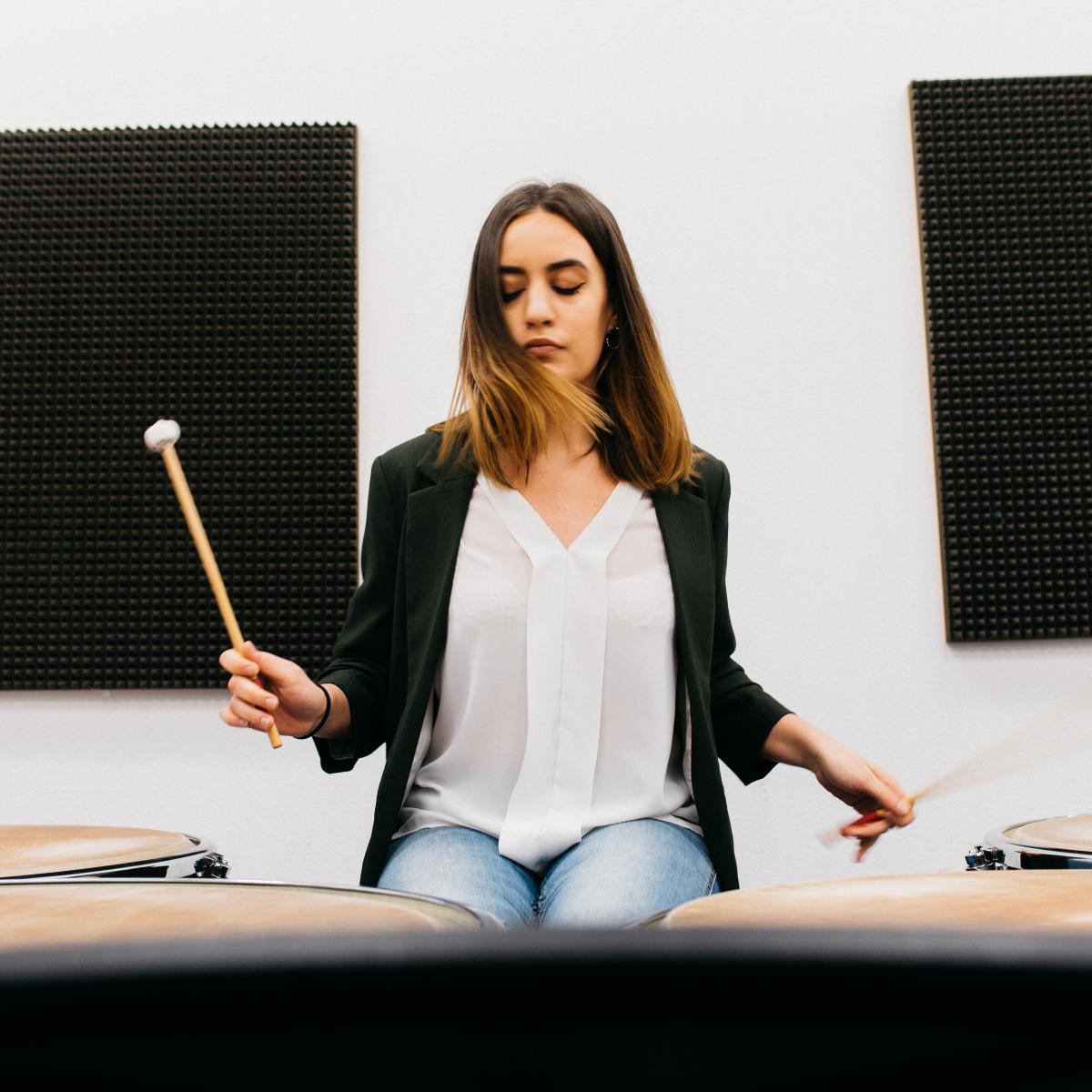
Bachelor
Percussion
Choosing the path of classical percussion studies at Conservatorium Maastricht means being part of a class where pillars like professionalism, hard work, solidarity and camaraderie are fundamental.
Based on the department’s vision that in their fundamental way of playing, percussionists should achieve an open sound, mixed with a fluent and balanced technique, you will be given all the tools to become the ideal percussionist or timpanist that orchestras all over the world are looking for!
In addition, you will acquire teaching skills, enabling you to introduce future players to the world of percussion, with all its instruments and colours.
In the percussion department you’ll be teached by the following lecturers
Curriculum
Curriculum
|
Major Percussion |
More info |
Year 1 |
Year 2 |
Year 3 |
Year 4 |
|---|---|---|---|---|---|
Main Subject and Components related to the Main Subject |
26 |
26 |
29 |
47 |
|
Main Subject Percussion |
26 |
26 |
29 |
47 |
|
Professional Development |
5 |
3 |
3 |
||
Orientation on Profession |
5 |
||||
Basic Teaching Skills Instrument Specific Methodology |
1 |
||||
Basic Teaching Skills Lectures |
1 |
||||
Studio Recording Preparation |
1 |
||||
Your Art as a Business Basic Course |
2 |
||||
Your Art as a Business Electives |
1 |
||||
Music Theory |
22 |
23 |
12 |
||
Skills Lab |
6 |
8 |
|||
Creative Lab |
8 |
8 |
|||
Capstone |
4 |
||||
History of Music |
3 |
2 |
|||
Choir |
2 |
||||
Choir Classical (General) |
2 |
2 |
|||
Applied Piano Classical |
3 |
3 |
|||
Elective Theory Modules |
8 |
||||
Ensemble |
7 |
8 |
8 |
6 |
|
Projects A |
4 |
4 |
4 |
4 |
|
Chamber Music |
2 |
2 |
2 |
2 |
|
Wind Band Lessons |
1 |
2 |
2 |
||
Minor |
8 |
7 |
|||
Free Space |
8 |
7 |
Before you apply
Admission
requirements
First round
The audition consists of two rounds. For the first round, the candidate needs to record videos that contain:
-
Video 1: A short introduction of him/herself in English: talk about your musical experiences, your motivation to study music, your main subject and why you choose to audition at Conservatorium Maastricht.
-
Video 2: In the second video, the candidate demonstrates his/her artistic and technical skills. The video should be recorded in one take, without cuts or any edits. The candidate should start by speaking their name and student number of Conservatorium Maastricht. The video(‘s) should contain the following:
Snare drum:
-
M. Peters – Advanced Snaredrum Studies no.15
Timpani:
-
R. Hochrainer: Etüden für Timpani no.54
Melody instrument:
One solo piece piece for marimba or Vibraphone (4 mallets)
Additional video’s (not required): The candidate may provide concert video registrations.
The videos should be uploaded to an online platform such as YouTube.com or Vimeo.com. It is the candidate’s responsibility to make sure that the video links work.
Second round
The candidate will be invited to come to Maastricht for an in-person live audition. The candidate needs to prepare the following:
Snare Drum
Two etudes of contrasting character, to be chosen from:
J. Délécluse - Etudes Pour Petite Caisse (from nr. 11 onwards), Studio M, Douze Etudes
M. Peters - Intermediate Snare Drum Studies (from nr. 13 onwards) or Advanced Snare Drum Studies
-
S. Fink - Studies for Snare Drum Vol. 5 (from nr. 10 onwards)
Timpani
Two etudes for 3 or 4 timpani of contrasting character, to be chosen from:
R. Hochreiner: Etüden für Timpani (from nr. 47 onwards)
F. Hinger: Technique for the Virtuoso Timpanist (from etudes for 3 drums)
J. Délécluse: Trente Études 2e Cahier
J. Délécluse: Vingt Études
N.Woud: Symphonic Studies for Timpani
N.Woud: The Timpani Challenge
-
E. Keune: from etude 121 onwards
Melody instruments
Performance of one solo piece for marimba or Vibraphone (4 mallets) command of the fundamentals of four-mallet percussion technique according to Holmjgren or L.H. Stevens. command of the fundamentals of vibraphone technique, dampening and pedalling as explained by David Friedman in Vibraphone Technique.
In the second round, the candidate is invited for an online theory test which determines whether the candidate is admissible. More information about the theory test may be found here.
Additionally, the theory department may re-invite the candidate for a level test to determine whether the candidate can start the theory program on a higher level.